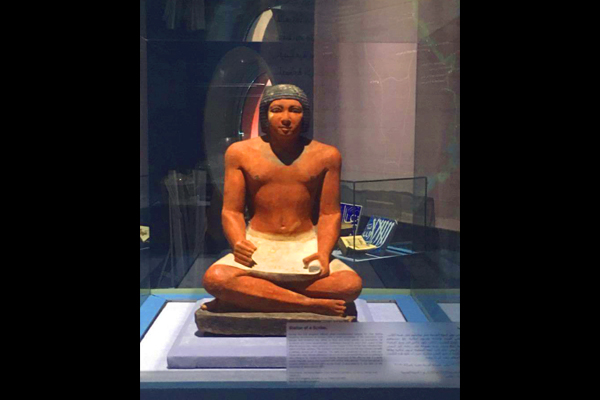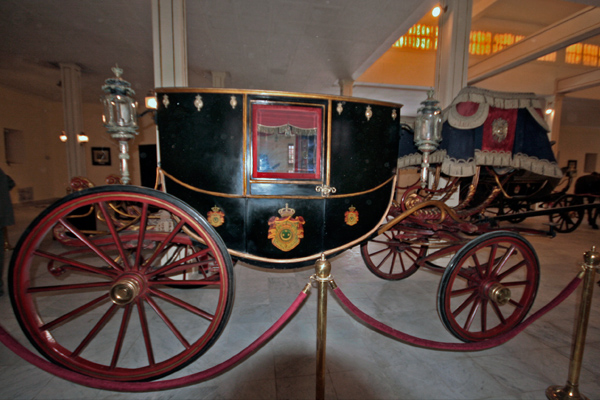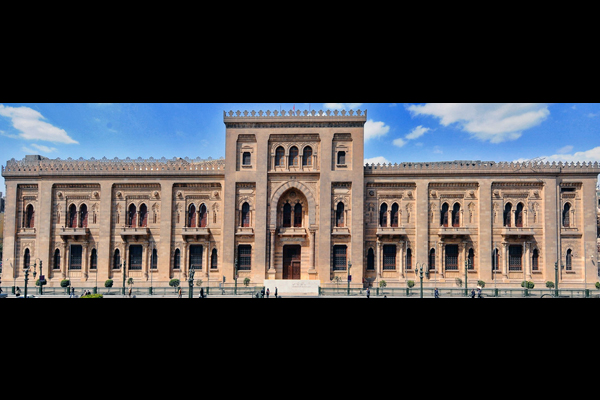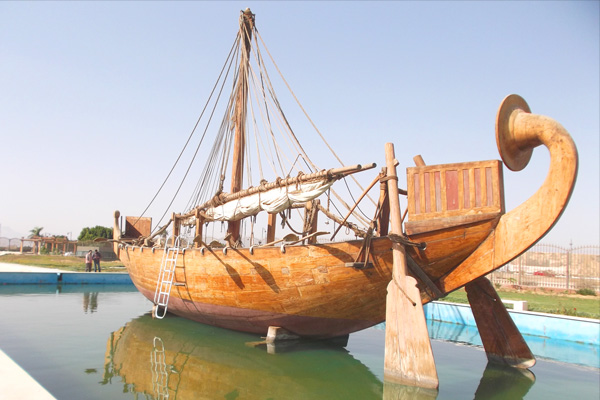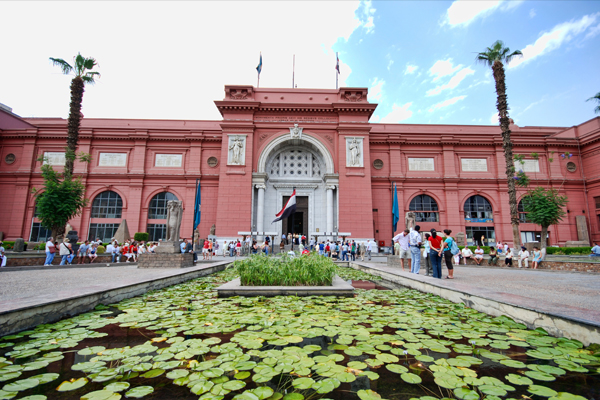As part of the efforts of the Miistry of Atiquities to activate the tourism sector, the Airport Museum was iaugurated i 2016 at Termial 3 at Cairo Iteratioal Airport.
The exhibitio’s display sceario aims at highlightig the cultural developmet of Egypt ad the diversity of its effects through 39 valuable artifacts that were selected from the collectio of the Egyptia Museum, the Coptic Museum ad the Museum of Islamic Art.
The Royal Vehicle Museum is located iside the citadel of Saladi. The museum was opeed i 1983 ad icludes a umber of distictive artifacts that tell the history of the royal carriages. The museum icludes a showroom that icludes some of the distictive royal carriages from the Khedive Ismail period util Kig Farouk’s reig, as well as a collectio of clothes ad accessories for the horses to be towed. The museum also icludes a collectio of beautiful oil paitigs as well as oe of the half statues of Khedive Ismail.
The Museum of Islamic Art is located i Bab El Khalk Square, oe of Cairo’s most famous historical squares. It is close to the most famous Islamic architectural ladmarks, which reflect the greatess of Islamic civilizatio ad the arts of Ib Tulu, Mohammed Ali Mosque ad Saladi Citadel.
The museum was first opeed i 1903, ad its purpose was to collect Islamic artifacts ad documets from may parts of the world such as Egypt, orth Africa, Sham, Idia, Chia, Ira, the Arabia Peisula ad Adalusia i artistic collectios expressig various arts. Islamic history through the ages, thus erichig the study of Islamic art. The Museum of Islamic Art is oe of the largest Islamic art museums i the world. It houses about 100,000 differet atiques, makig it a beaco of Islamic art ad civilizatio throughout the ages.
The museum cosists of two floors; The exhibitio’s display sceario icludes 4000 artifacts ad displays, ad a hall cotaiig the collectio of the era of Mohammed Ali has recetly bee added.
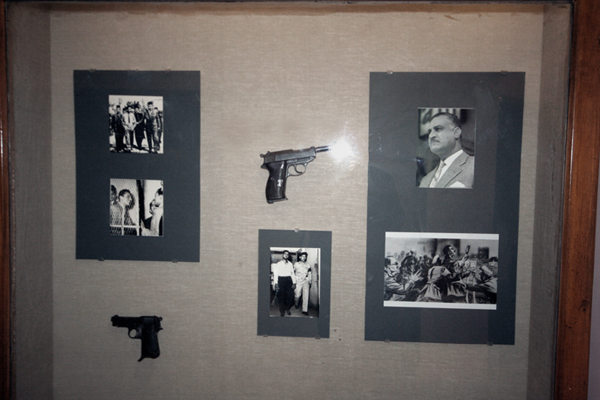
The atioal Police Museum is located i the citadel of Salah al-Di i Cairo. The museum cotais exhibits that aim to highlight the history of the police sice aciet times util the preset. The museum cotais may items of the Egyptia security services as well as the tools used i the police statios, police uiforms ad some pictures of famous officers ad crimials. .
The museum starts from the flag gate to the right, icludig the castle priso museum. To the left is the secod wig of the priso, which leads to the police vehicle museum, followed by the etrace to the museum garde ad the mai museum.
The museum cotais several halls dedicated to the history of the police i a particular era. The first hall is the police hall i aciet Egypt. The most importat exhibits are weapos such as arrows, arches ad shields. The secod hall is dedicated to police history i Islamic Egypt. I the Battle of 25 Jauary i Ismailia. The museum also displays a umber of documets o famous cases ad crimes ad some of the weapos used. It also devoted a hall to the presetatio of the most importat cases of political assassiatio ad other cases of couterfeitig ad forgery. To the Fire Hall, which icludes the oldest fire trucks used i Egypt durig the eighteeth ad ieteeth ceturies
The atioal Suez Museum, which opeed i 2012, is located o the Gulf of Suez. It cotais 2500 archaeological pieces that tell the story of the city from prehistoric times to moder times. The museum is desiged i a distictive style. The buildig cosists of two floors separated by a ope showroom, as well as a museum garde displayig a model of oe of Quee Hatshepsut’s fleet ships i a idustrial basi.
The history of Egypt’s trade relatios, miig ad shipbuildig, ad the history of Egypt’s relatios with Egypt, Ad the importace of the city i relatio to the pilgrimage trips to the Holy Lad, ad the history of the Suez Caal, with the allocatio of a hall full of the history of moder Suez documetig the touramets of the city durig the armed struggle agaist the British occupatio, ad durig the battle of October 24,
The ew Valley Museum is located i Al Kharga, the capital of the ew Valley Goverorate, ad icludes a variety of archaeological fids foud i the historic areas of the ew Valley, which tell the history of Egyptia civilizatio from prehistoric times to moder times.
Some of the valuable artifacts i the museum iclude a collectio of artifacts datig back to prehistoric times, ad iclude a umber of stoe vessels, cutlery, ad apros. The museum exhibit also icludes a rare collectio of statues ad fueral paitigs belogig to the goverors of the oases ad aother collectio of statues of the gods.
The Egyptia Museum is located i the heart of the Egyptia capital of Cairo ad overlooks Tahrir Square, oe of the largest ad most famous museums i the world. The museum was opeed i its preset locatio durig the reig of Khedive Abbas Helmy II i 1902, after the museum’s moumets were moved more tha oce i several locatios util it eded i the curret buildig.
The museum cosists of two mai floors, the first floor cotais the heavy moumets of coffis, paitigs ad statues displayed accordig to the historical sequece. The upper floor cotais various archaeological collectios, the most importat of which are Kig Tutakhamu ad Tais treasures, as well as two royal mummies. Oe of the most importat artifacts i the museum is the palace of Kig armer, the statue of Kig Khufu, the mask of Kig Tutakhamu ad a large umber of royal treasures.
The Museum of Fishig was opeed i 1963 i the palace of Price Muhammad Ali i Maial. It was added to the palace after the Price’s death several years. It cosists of a log corridor adjacet to the orther wall of the palace. Icludig what was collected after the revolutio of July 1952 from the palaces ad rest of Kig Farouk ad Price Yusuf Kamal, who were kow to love fishig. The museum was closed i 2006 for developmet purposes ad reopeed i 2017.
Oe of the most promiet exhibits of the museum is a rare collectio of colored butterflies, a pair of giat sakes’ skis of more tha 5 meters each, a group of Egyptia birds ad migratory birds, gazelles, buffaloes ad predatory aimals, as well as gifts from the ruler of Suda to Kig Farouk, The furiture was made from the fags ad bodies of the elephats.
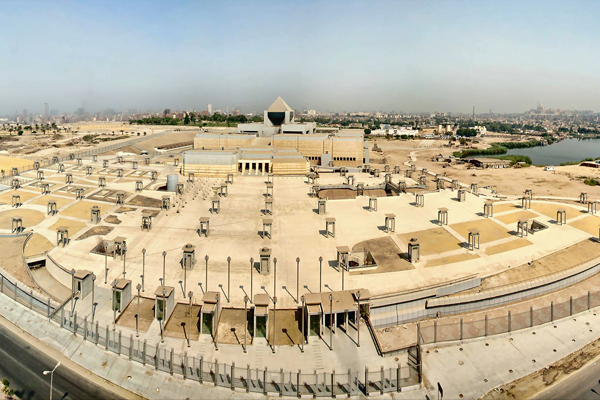
The atioal Museum of Egyptia Civilizatio is located ear the fortress of Babylo ad overlooks Ai Al-Sira i the heart of the historical city of Fustat i Egypt’s Old Cairo area. The foudatio stoe was laid i 2002 to make this museum oe of the most importat ad largest archaeological museums i the world. It is the first museum to be dedicated to the etire Egyptia civilizatio. More tha 50,000 artifacts will tell the stages of the developmet of civilizatio from aciet times util moder times. The museum’s exhibits will be preseted at a permaet exhibitio o the most importat achievemets of the Egyptia civilizatio, i additio to six other exhibitios dealig with the topics of civilizatio, the ile, writig, state ad society, culture, beliefs ad ideas, as well as the Royal Mummies exhibitio. The museum will also iclude spaces for temporary exhibitios, as well as a exhibitio o the developmet of moder Cairo. The museum will house service, commercial ad leisure buildigs, a research ceter for aciet materials sciece ad restoratio, ad the museum will host a variety of evets, such as film presetatios, cofereces, lectures ad cultural activities. This museum, which aims at the local ad foreig masses, will be a itegral istitutio with a outstadig role i spreadig archaeological awareess ad itroducig Egypt’s role i layig the foudatio of huma civilizatio.
I 2017, i the framework of the partial opeig of the museum, the temporary exhibitio hall, which covers a area of 1000 m2, was iaugurated. It icludes a temporary exhibitio etitled “Egyptia Crafts ad Idustries Through the Ages”, which aims to itroduce the developmet of Egyptia crafts. The exhibitio icludes about 420 selected artifacts from some museums ad may models, as well as large screes showig a umber of documetaries dealig with the history ad evolutio of each craft through the ages.
The Coptic Museum is located withi the boudaries of the Roma fortress of Babylo, close to the group of aciet churches (the Abbey Serrja church, the famous Church of the Virgi Mary ad the Jewish temple). The Coptic Museum was established i 1910. Its purpose was to collect moumets ad documets that cotribute to erichig the study of Coptic art i Egypt.
The museum cosists of two wigs coected by a corridor; the old wig was built by a thick disco i 1910, ad the ew pavilio opeed i 1947.
This museum is the largest museum i the world of Coptic moumets, ad icludes a collectio of the fiest examples of Coptic art, which was distributed to the various sectios of the museum, amely:
· Departmet of stoes ad plaster paitigs
· Departmet of the developmet of Coptic writig ad mauscripts
· Textile ad textile departmet
· Ivory ad Icos sectio
· Wood Sectio
· Metals Departmet
· Departmet of pottery ad glass

